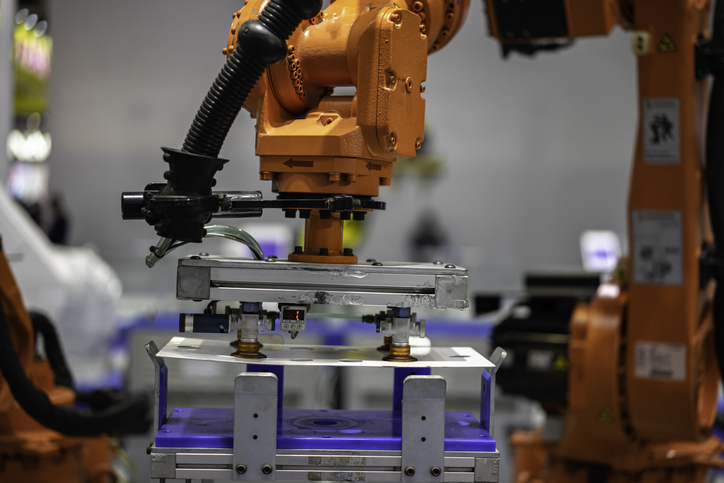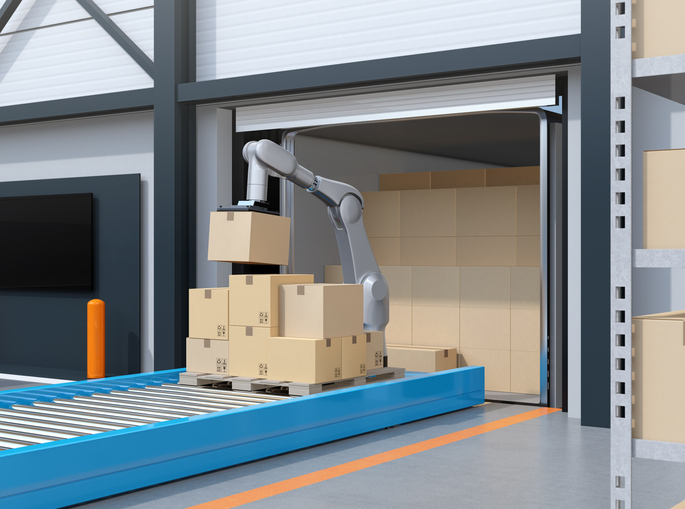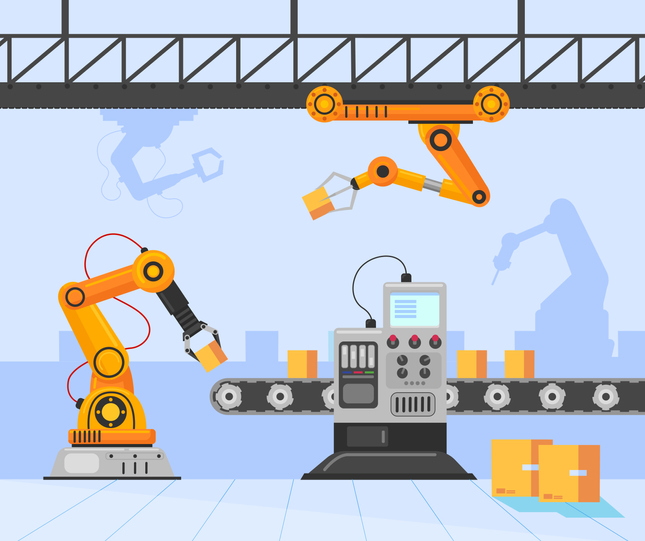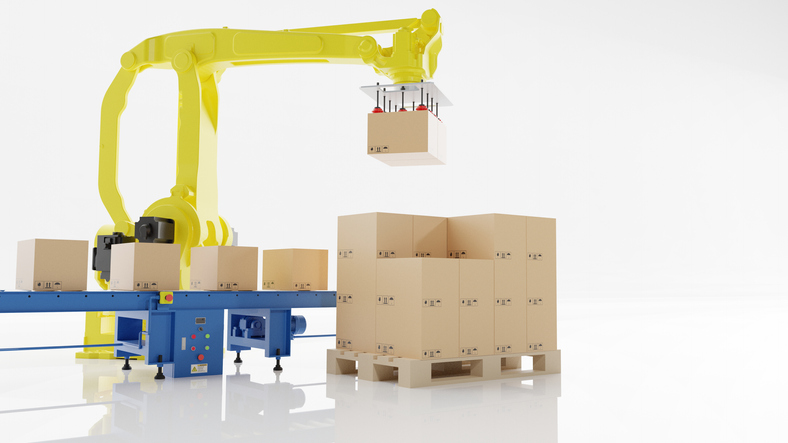In the dynamic landscape of modern warehouses, industrial robots have emerged as transformative agents, revolutionizing operations by enhancing productivity, efficiency, and worker safety. As warehouses increasingly turn to automation, the importance of selecting the right industrial robots becomes paramount for unlocking the full potential of these technologies.
Overview of Six Different Types of Robots
There are six main industrial types of robots. Each robot type possesses unique characteristics and applications, making them suited for specific warehouse tasks. Understanding their differentiators is crucial for making informed decisions.
Cartesian Robot
Cartesian robots stand out as versatile workhorses in warehouse automation, particularly excelling in pick-and-place applications. With their linear movements and a cube-shaped workspace, Cartesian robots provide an ideal solution for precise and repetitive tasks involving the systematic transfer of items from one location to another. These robots are easy to use and program, making them a popular choice among plant operators for their flexibility and adaptability. The straightforward nature of Cartesian robots allows them to seamlessly integrate into various pick-and-place scenarios, efficiently handling items with precision and reliability. Their customization options, including stroke lengths, speed, and precision, empower users to tailor the robots to meet specific application needs, making Cartesian robots indispensable for streamlining pick-and-place processes in warehouse environments. Below is a description of types of industrial robots.
Cylindrical Robot
Cylindrical robots offer an ingenious solution for warehouse automation, particularly in scenarios where economical space management is a critical consideration. Comprising two main moving elements, rotary and linear actuators, cylindrical robots present a cylindrical work envelope that efficiently utilizes space within a warehouse setting. These robots are well-suited for applications that involve picking up, rotating, and placing materials. The simplicity of their design, coupled with ease of installation and use, makes cylindrical robots an attractive choice for tasks requiring uncomplicated yet effective automation. Whether handling materials in confined spaces or orchestrating straightforward pick-and-place operations, cylindrical robots provide a cost-effective and space-efficient solution, contributing to the optimization of warehouse processes with minimal assembly complexity.
SCARA Robot
SCARA robots, with their unique design featuring articulated arms and an all-in-one structure, emerge as powerhouse solutions in warehouse automation. SCARA stands for Selective Compliance Assembly Robot Arm, and these robots excel in a diverse range of applications, making them ideal for specific warehouse tasks. Equipped with x, y, z, and rotary motion capabilities in a compact and ready-to-go package, SCARA robots offer versatility in their applications. Their small work area and swift movements make them particularly well-suited for tasks requiring speed and precision, such as assembly, pick-and-place, and packaging operations. SCARA robots are frequently employed in biomed applications due to their ability to navigate confined spaces with agility. The integration of SCARA robots into warehouse automation processes provides an all-encompassing solution that enhances efficiency, flexibility, and overall productivity.
6-Axis Robot
6-Axis robots, also known as articulated robots, represent a pinnacle in versatility and flexibility within warehouse automation. Modeled after the human arm, these robots feature six rotating joints, allowing for an extensive range of motion and the ability to mimic complex maneuvers. Particularly well-suited for large assembly jobs, such as placing seats into cars on an assembly line, 6-Axis robots offer unparalleled dexterity in handling materials and navigating multiple planes. While they can be sizable, even reaching amusement park ride simulation capabilities, their ability to perform intricate tasks that other robot types might find challenging makes them indispensable in certain warehouse applications. The complexity in programming is offset by their capability to undertake tasks that demand precision and multi-dimensional movements, contributing significantly to the optimization of warehouse processes where their unique skill set is indispensable.
Delta Robot
Delta robots, with their distinctive parallel-link structure and high-speed capabilities, play a crucial role in enhancing efficiency in warehouse automation, particularly in fast pick-and-place or product transfer applications. These robots feature a unique dome-shaped work envelope that allows them to achieve remarkably high speeds and maintain precision. Delta robots are specifically designed for swift and repetitive movements, making them ideal for tasks such as moving parts from a conveyor belt and placing them in boxes or onto another conveyor belt. Their unparalleled speed and precision set them apart in scenarios where rapid handling of lightweight items is paramount. Despite being more complex in use compared to some other robot types, the advantages of speed and precision make delta industral robots an invaluable asset in streamlining warehouse operations, ultimately contributing to increased throughput and productivity.
Gantry Robot
Gantry robots, characterized by their overhead mounted structure and ability to cover large spans, represent a formidable force in warehouse automation. These robots are engineered to handle heavy lifting and manage extensive work areas, making them essential for applications that require moving materials across vast distances within a warehouse. Their design allows for precise control over the vertical and horizontal axes, enabling them to lift and transport heavy objects with accuracy. Gantry robots are particularly beneficial in scenarios where a broad range of motion and lifting capabilities are crucial, such as loading and unloading pallets or managing inventory across expansive storage facilities. Despite their large-scale applications, gantry robots contribute significantly to the optimization of warehouse logistics, ensuring the swift and accurate movement of goods within the operational space.
Factors Influencing Robot Selection
The selection of the appropriate type of industrial robot is a critical decision influenced by a nuanced understanding of various factors. Load, defining the weight a robot can carry, is pivotal in determining its suitability for a given task. Orientation details how a robot's end-effector aligns with objects, influencing its adaptability to different applications. Speed becomes crucial in operations where swift movements enhance efficiency, while travel defines the robot's range within a workspace. Precision, the ability to consistently reach desired positions, is essential for tasks demanding accuracy. Environment considerations ensure that the robot can withstand and operate in specific conditions, whether exposed to heat, dust, or other factors. Lastly, duty cycle, detailing the duration and intensity of robot operation, aids in selecting a robot that aligns with operational needs, ensuring optimal performance over extended periods. Collectively, these factors play a pivotal role in tailoring the choice of an industrial robot to the unique requirements of a particular application or warehouse setting.
Making Informed Decisions for Warehouse Automation
In the realm of selecting and procuring robots for warehouse automation, a strategic and informed decision-making process is paramount. First and foremost, assessing specific warehouse needs involves a comprehensive examination of the unique requirements and operational intricacies of the facility. This step ensures a precise understanding of the tasks at hand, allowing for the identification of the most suitable robot types that align with the specific demands of the warehouse. The integration of factors for optimal decision-making goes beyond individual robot characteristics. It entails developing a holistic approach that considers load capacity, speed, precision, and environmental factors in concert. By synthesizing these variables, decision-makers can tailor their choices to create a cohesive and efficient robotic system that seamlessly integrates into the warehouse workflow. Furthermore, the importance of external safety systems cannot be overstated. Recognizing their crucial role in maintaining a secure warehouse environment, decision-makers prioritize the implementation of robust safety measures, fostering a harmonious coexistence between human workers and automated systems. This trifecta of assessing needs, integrating factors, and prioritizing safety ensures a judicious and effective process in selecting and procuring robots for warehouse operations.
Working with Independent Robotics Consultants
Collaborating with a robotics consultant offers a myriad of advantages in the realm of warehouse automation. Firstly, the benefit of working with a consultant not tied to selling just one solution is paramount. This independence ensures an unbiased evaluation of diverse robotic options, allowing for the selection of the most fitting technology tailored to specific warehouse needs. Secondly, leveraging product knowledge and past project experiences across multiple industries provides invaluable insights. Consultants bring a wealth of expertise gained from varied applications, enabling them to recommend tried-and-tested solutions based on successful implementations in different sectors. Lastly, the ability to conduct simulations and time studies for optimal sizing enhances the decision-making process. Consultants employ advanced tools to simulate how robots will operate within the warehouse, ensuring they are appropriately sized for payload, speed, and reach. This holistic approach, encompassing diverse solutions, extensive knowledge, and simulation capabilities, makes working with a robotics consultant instrumental in achieving seamless and effective warehouse automation.
In conclusion, mastering warehouse automation requires a meticulous understanding of industrial robot types, key selection factors, and a strategic approach to implementation. By learning from real-world examples, embracing best practices, and leveraging the expertise of systems integrators, warehouses can truly optimize their operations for increased efficiency and productivity. The future of warehouse automation is now, and the right industrial robots are the key to unlocking its full potential. Contact Visigistics today to learn more or to talk about your industrial automation needs. We can help you choose the best robots for your business and save money when you purchase them.





